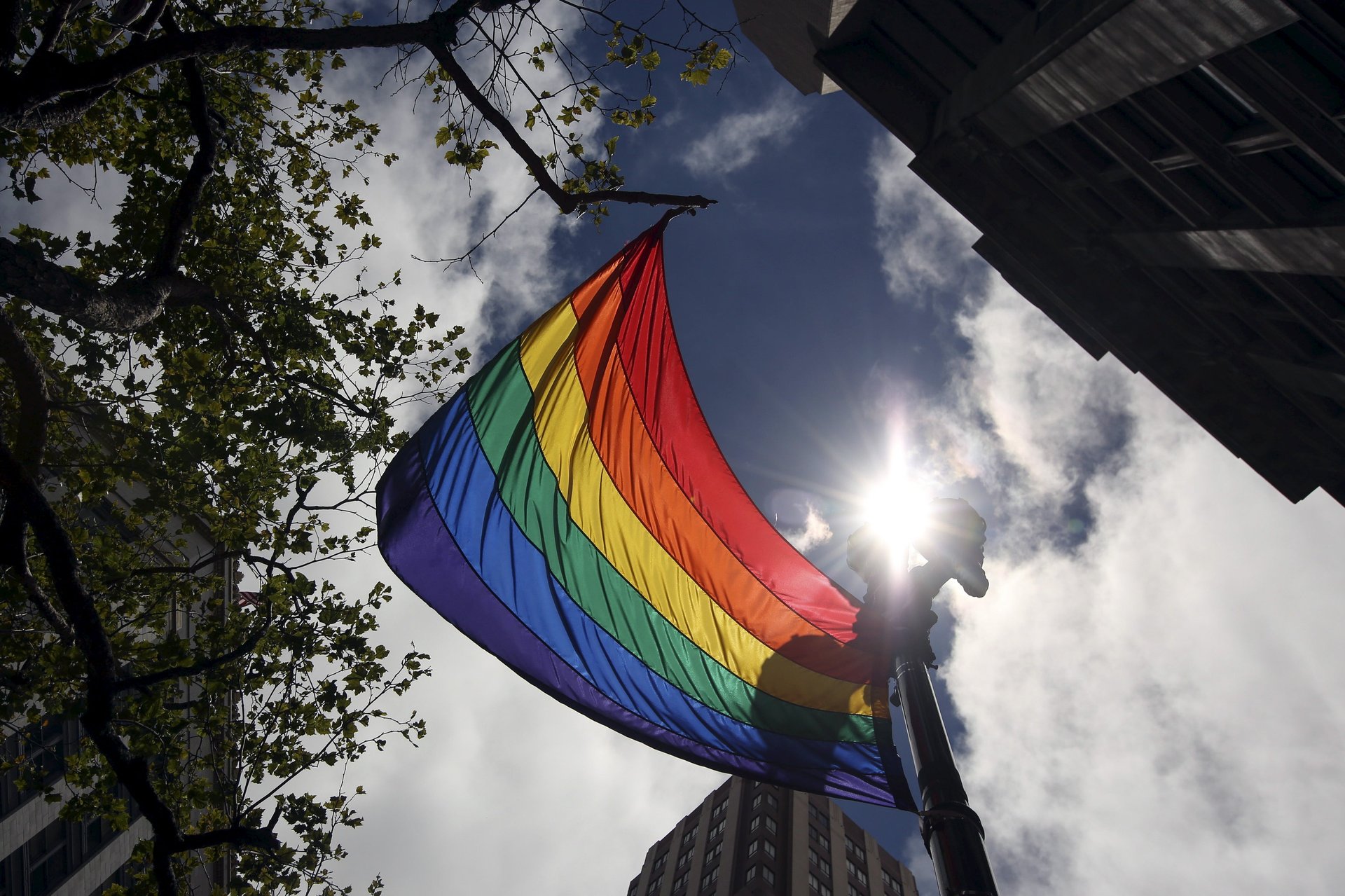San Francisco is officially LGBTQ—but what about black and Chinese?
In a big win for San Francisco’s LGBTQ community, the city’s board of supervisors voted unanimously on Tuesday to formally recognize its kink and leather district as a place of historical importance.


In a big win for San Francisco’s LGBTQ community, the city’s board of supervisors voted unanimously on Tuesday to formally recognize its kink and leather district as a place of historical importance.
The distinction protects an area in the city’s South of Market (SoMa) neighborhood by designating it as the LGBTQ+ and Leather Cultural District. The city’s gentrification crisis has whittled the area—a former hotbed for San Francisco’s infamous gay leather scene—down to just four queer and leather bars in the 30 block-neighborhood.
San Francisco has been a well-known site of LGBTQ culture for decades, and made a groundbreaking move last year by appointing the Compton Transgender Cultural District in the city’s Tenderloin neighborhood as the nation’s first transgender district. An effort is also underway to form a Castro LGBTQ Cultural District.
The selection of cultural districts typically involves comprehensive zoning regulations, imposed by either the city or state government, in addition to granting the area legal status as a protected space. The goal is to preserve an area’s history, identity, and community in the face of SF’s rising commercial and housing costs. District proposals tend to include a budget measure to help support the area’s economic development.
The city has three additional protected cultural districts: the Japantown Cultural Heritage District which was established in 2013, as well as the Calle 24 Latino Cultural and SOMA Pilipinas districts instituted in 2014. The latter two were a part of a statewide cultural district program that protects 14 districts across the state.
However, there are no designated cultural districts for Chinese residents—the city’s largest Asian minority group—or black residents, who after Latinos and Filipinos (communities with cultural districts), are the largest minority group in San Francisco.
So why are there no Chinese or black cultural districts?
Good question!
The short answer is that the Chinese community doesn’t need one, nor do they want one. According to 2017 census data, the Asian population in San Francisco is at 33.9%, with 21.4% of that category comprised of Chinese or Chinese-American residents, making them largest ethnic subgroup in the city.
Chinatown is the city’s second-most popular tourist destination after the Golden Gate Bridge, is the most densely populated neighborhood west of Manhattan, and the largest Chinatown outside of China. Its residents, moreover, have managed to create a thriving community that retains much of is cultural identity, thanks in part to the city’s long-standing Chinese Culture Center, a major cultural preservation hub established in 1965.
Aaron Peskin, who represents Chinatown on San Francisco’s Board of Supervisors, says over the phone that the organizations that have worked hard over the past few decades to preserve Chinatown’s economic diversity and cultural richness have, in fact, “not been interested in availing themselves of cultural districts” which is a relatively new phenomenon in San Francisco:
“When you look at the fine print in terms of what being a Cultural District means, in terms of zoning and other benefits, they’re things that Chinatown already enjoys… They already have it and then some.”
San Francisco’s black community, on the other hand, has been steadily shrinking—and would clearly benefit from the protection of a cultural district to honor their once flourishing presence. In 1970 San Francisco’s black population was 96,000, or one in seven people—and there were thriving black neighborhoods across the city. By 2016, that number was more than cut in half (paywall) with most of the city’s 46,000 black residents—that’s one in twenty people—living in public housing.
The exodus began in the late 1940s when city officials declared San Fran’s Fillmore neighborhood—a black commercial hub at the time—the subject of a so-called urban renewal program under the California Redevelopment Act of 1945. The following decades saw the government close thousands of businesses and push out thousands of majority-black households from the area, largely under the pretense of eminent domain. During a visit to Fillmore in 1963, writer James Baldwin described the city’s efforts at urban renewal as “Negro removal,” a term that has since been used to criticize the disproportionate impact of redevelopment programs on black neighborhoods and households.
Today, San Francisco’s black population sits at a mere 5.4%, and while there’s currently an effort underway to create an African American cultural district in Bayview, it has yet to be approved by the city. With scant numbers and little economic clout, San Francisco’s black population lacks the influence and resources—at least so far—to turn their cultural district into reality.
Peskin echoes this sentiment, noting that the decimation of the traditional African American neighborhoods—the Fillmore, Western Addition, and Bayview—continue today, in large part due to the policies that San Francisco’s mayors and legislators have chosen to embrace “as they welcome Silicon Valley and tech companies with open arms.”
Nonetheless, considering the major role African-Americans have played in San Francisco history, the city would do well to protect black culture in a robust and formalized way. Furthermore, while the connections between gentrification, race, and displacement are complicated, the considerable reduction of San Francisco’s black population over the past several decades would likely be reason enough for the country’s preeminent liberal city to take action.